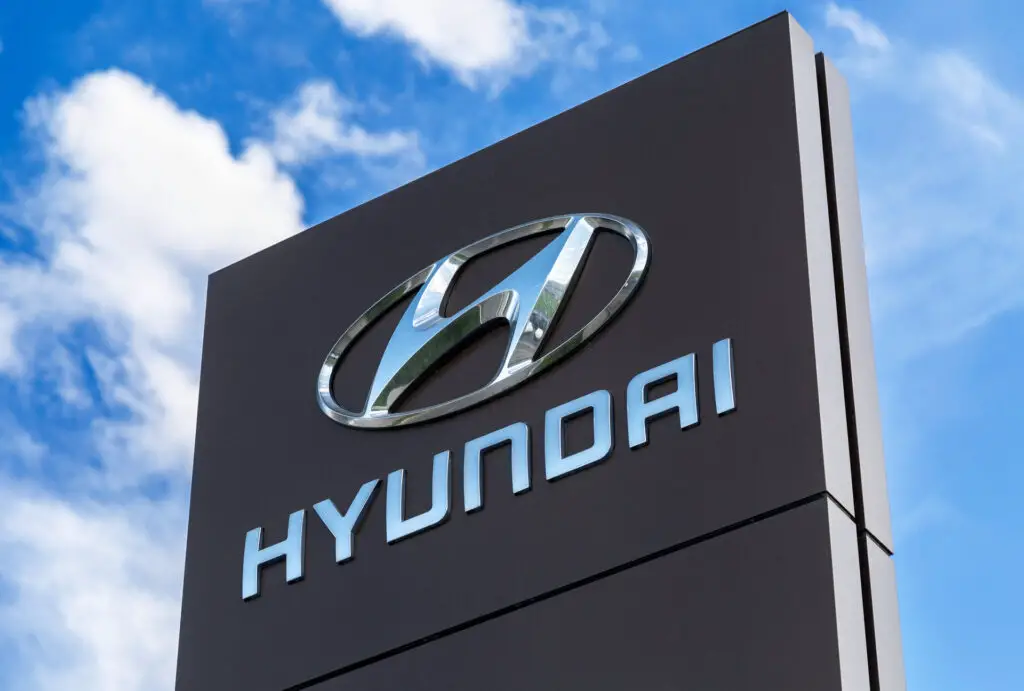There’s nothing quite like cruising down the highway, the engine purring like a contented cat. But even the best journeys have pit stops, and for enthusiasts and owners alike, one crucial pit stop is regular upkeep. But how much does scheduled maintenance cost exactly? From sleek sports cars to sturdy family vehicles, let’s explore the hidden chapter of auto repair expenses, making sure there are no unpleasant surprises down the road.
How Much Does Scheduled Maintenance Cost?
According to the American Automobile Association (AAA), vehicle maintenance comes with an annual average of around $800, which breaks down to around $66 each month. This figure encompasses the regular care tasks – think oil changes, tire rotations, and thorough multipoint inspections. However, when it comes to unforeseen repairs, perhaps due to an accident or a sudden breakdown, the expenses can vary much more.

A Deep Dive Into Automotive Service Pricing for a Surprise-Free Journey Down the Road
Your prized ride, much like a loyal companion, takes you on countless adventures – to work, on road trips through famous US routes, and everything in between. Regular maintenance is like giving back to this faithful friend, ensuring it stays ready for the miles ahead. Here’s why regular upkeep is absolutely essential:
- Regular check-ups can significantly extend your car’s life,
- It ensures your ride stays smooth and efficient in its performance,
- Regular service keeps safety features in check, protecting you and your passengers,
- Well-maintained cars have better resale value when sold as used vehicles,
- Knowing your four-wheeler is in top condition simply brings peace of mind.
What Does Scheduled Maintenance Include?
When it comes to routine check-ups, there are some standard services every four-wheeler needs, regardless of make or model. It’s like a health check for your car, ensuring it runs smoothly and reliably for years to come. Let’s take a look at some of these essential services:
| Service | Interval | Average Cost |
| Oil and filter change | Every 5,000-7,000 miles (12 months) | $50-$200 |
| Cabin air filter change | Every 15,000-25,000 miles (12 months) | $50-$175 |
| Tire rotation | Every 5,000-8,000 miles (6 months) | $25-$140 |
| Wiper blade replacement | Every 6-12 months | $10-$90 |
| Brake pad replacement | Every 30,000-50,000 miles | $100-$350 |
| Multipoint inspection | Every visit | Free of charge-$250 |
Dealership vs. Independent Service Costs – What’s the Difference?
Dealerships are the experts of their specific brand, often equipped with the latest tools and technology specific to your model. However, this expertise often comes with a higher price tag. In that regard, independent mechanics offer more competitive pricing and, more importantly, a personal touch by knowing your car’s history.
Mechanics are also typically more flexible in terms of parts and repair options, but dealerships may offer warranties and guarantees that independent shops don’t, giving you an extra layer of security. Ultimately, the choice depends on what you value more for your vehicle – specialized brand care or a more budget-friendly, personalized approach.

What Factors Play Important Roles in Vehicle Maintenance Budgeting?
Just as no two journeys are the same, no two four-wheelers share the same story or maintenance needs. The ownership costs to keep these mechanical marvels purring vary widely, hinging on several key factors:
Vehicle Type and Model
The make and model of your vehicle play a starring role. It’s simple – a luxury sports car might demand premium parts and specialized services, while a compact family vehicle could be way more forgiving on your wallet. The age of the vehicle also swings the financial needle, as older models might need more frequent check-ups for obvious reasons.
The Extent of Maintenance
As with other things, prevention is better than cure. Regular, proactive maintenance can often be more cost-effective than waiting for a problem to arise. This includes routine check-ups and replacements of wear-and-tear parts.
But the more comprehensive and thorough these inspections are, the higher the initial cost. It’s a trade-off between short-term costs and potentially expensive repairs down the road, where investing a bit more now can potentially save you a lot in the future.
Driving Habits and Environment
Last but not least, your driving style and the environment in which you commute can also be a significant factor. Aggressive driving, frequent short trips, or navigating rough terrain can accelerate wear and tear, leading to more frequent and potentially costly needs. Similarly, cars in extreme climates – be it the scorching heat or freezing cold – may require special care to keep them running smoothly.
Cost-Effective Vehicle Upkeep – Saving on Costs for the Long Road
Navigating this upkeep highway doesn’t have to drain your wallet. With the right know-how, you can keep your prized ride in tip-top shape, all while cutting down on car expenses. Let’s roll down the path of savvy spending with some wallet-friendly tips:
- Learn simple tasks like oil changes and air filter replacements,
- A little research can lead to big savings, so make sure you compare prices for services across different garages,
- Use quality parts, which might cost more upfront but can save you money by lasting longer,
- Keep tires inflated, as this can improve fuel efficiency and reduce tire wear,
- Consider servicing your vehicle during off-peak seasons for potential discounts.
Keep an Eye Out for Warranties and Service Plans
Warranties and service plans are like your car’s safety nets, catching unexpected costs before they hit the ground. A warranty, especially an extended one, can be a financial lifesaver, covering major repairs and sometimes even routine check-ups.
On the other hand, service plans are like a subscription to peace of mind. For a set price, these plans cover scheduled maintenance, taking guesswork and sudden expenses out of the equation. They’re particularly handy for budgeting, as they spread the scheduled auto servicing costs over time. Some plans even offer added perks like roadside assistance.

Car Service Cost Analysis for High-End Vehicles and Specialty Maintenance
When you step into the world of high-end vehicles, the whole game changes. Luxury and performance vehicles, with their advanced technology and top-tier components, often require a higher level of care, which translates into higher car expenses.
Whether it’s a sports car that can hit zero to sixty in the blink of an eye or a luxury sedan that glides like a dream, these beauties demand more than just standard check-ups. The parts are pricier, and the expertise needed to handle them is more specialized. Moreover, these vehicles often need more than just mechanical attention. Their sophisticated electronics, custom interiors, and specialized paint jobs require a delicate touch.
The Most Important Thing Is to Find the Right Service for Your Luxury Car
Choosing the right service provider for your luxury four-wheeler is like finding a good doctor for a top athlete. It’s all about expertise, trust, and a shared understanding of what your car needs to perform at its best.
Start by looking for specialists who are experienced with your particular make and model.
Don’t hesitate to ask questions and get a feel for the service provider’s knowledge and passion. Lastly, consider the level of service and amenities offered. As we’ve just pointed out, when it comes to high-end vehicles, it’s not just about the maintenance—it’s about the experience needed to tackle these marvels.

Routine Auto Care Expenditure – What Does the Road Ahead Look Like?
As we cruise into the future, advancements in technology are reshaping the landscape of routine maintenance. With each new model, we’re seeing more sophisticated innovations, from self-diagnosing software to advanced driver-assistance systems.
While these innovations offer enhanced performance and safety, they also bring a new dimension to upkeep costs. The complexity of electronic systems and the need for specialized expertise could mean a bump up in the cost of routine care. However, there’s a silver lining – as cars get smarter, they’re also becoming more efficient in diagnosing issues, potentially reducing the vehicle inspection fees.
Electric Vehicles Are Changing the Game of Auto Repair Expenses
Electric vehicles (EVs) are turning the traditional auto repair playbook on its head. Without the complex internal combustion engines and numerous moving parts of gasoline cars, EVs sidestep a whole host of issues. No oil changes, no spark plug replacements, and fewer worries about engine maintenance charges.
It’s like trading a high-maintenance pet for one that pretty much takes care of itself. However, it’s not all smooth sailing. EVs bring their own set of needs, like battery care and other specialized tasks that can tip the scales of the total cost of car ownership. But overall, the consensus is clear – when it comes to routine upkeep, electric vehicles tend to be kinder on your wallet.
Navigating the Pits and Peaks of Vehicle Maintenance Doesn’t Have to Be a Complex Equation
As we cross the finish line of our automotive journey, it’s clear that keeping your prized ride in tip-top shape is a bit like a finely tuned dance. Whether you’re behind the wheel of a high-performance sports car or a trusty family hatchback, understanding the ins and outs of vehicle upkeep is key to a smooth ride. Keep these tips in your back pocket, and you’re all set for a journey that’s as cost-effective as it is enjoyable. Here’s to many more miles of happy, hassle-free driving!
Frequently Asked Questions
What Is the Most Expensive Maintenance Task for a Typical Car?
The most expensive task for a typical car would be related to major engine or transmission repairs or replacements. These repairs can be costly due to the complexity and labor involved. Regular upkeep and timely servicing can help prevent such expensive issues.
How Do Maintenance Costs Differ Between New and Older Cars?
Maintenance costs for new cars are typically lower in the early years due to warranties and fewer wear-and-tear issues. However, as cars age, these expenses tend to increase, primarily due to wear and the need for replacement parts.
How Can I Reduce the Cost of My Car’s Scheduled Maintenance?
To minimize the expense of your car’s scheduled upkeep, consider strategies like following the manufacturer’s recommended schedule, performing basic tasks yourself, and selecting a reputable independent mechanic. These approaches can greatly help in keeping the expenses in check.








